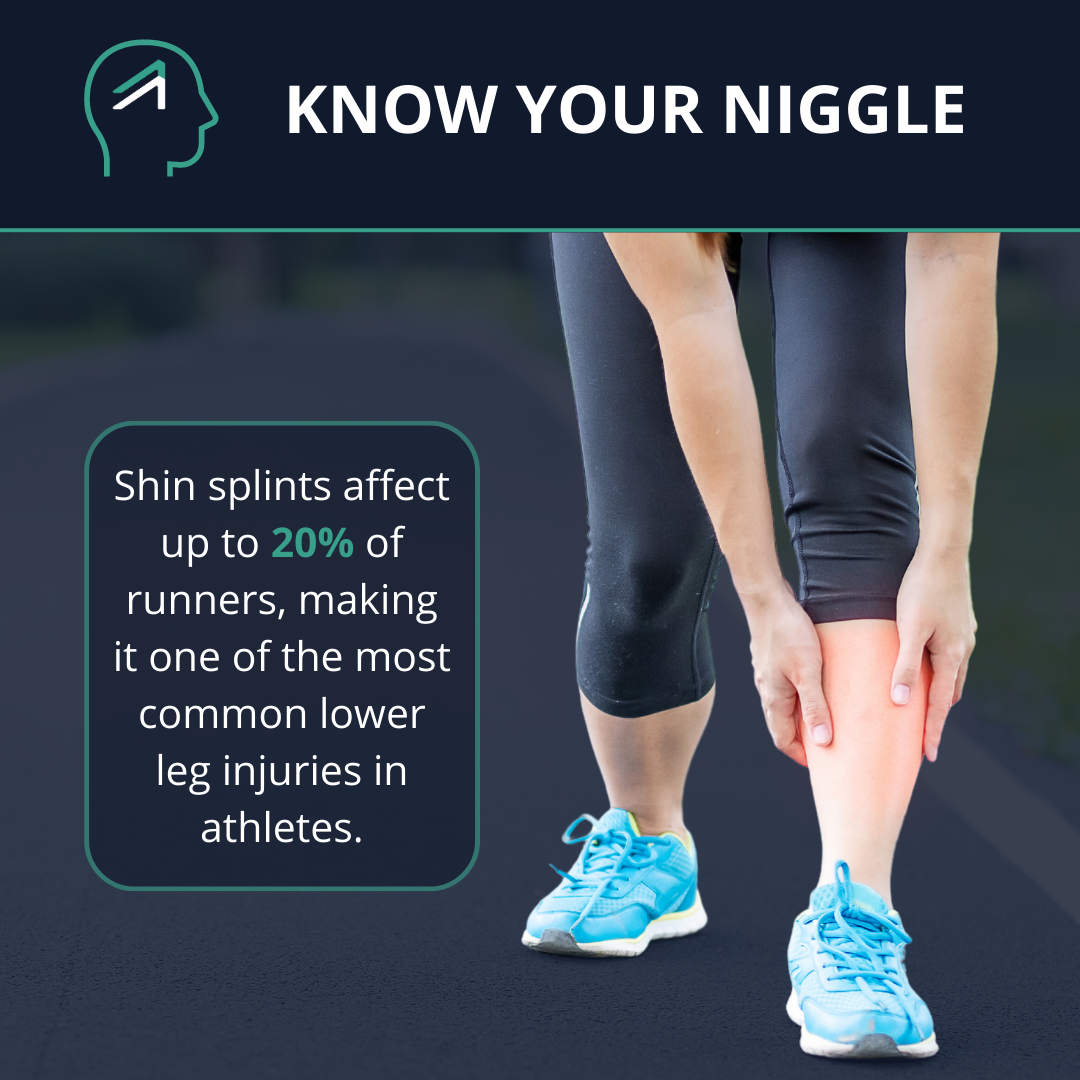Understanding Shin Splints: A Runner's Guide to Recovery and Prevention

Welcome, runners! If you've been struggling with persistent pain along your shinbone, you may be dealing with shin splints, a common injury that can put a damper on your training. But fret not! In this blog post, we'll explore the ins and outs of shin splints, demystify the injury, and equip you with the knowledge to overcome and prevent this pesky problem. So, let's dive right in!
What are Shin Splints?
Picture this: You're out for a run, enjoying the rhythm of your strides, when suddenly, you feel a nagging pain along the inside of your shin. Ouch! That's what we call shin splints. Shin splints, also known as medial tibial stress syndrome, are a common condition characterized by pain and tenderness along the inner border of the shinbone (tibia). This often happens when the muscles and connective tissues in your lower leg get overwhelmed by repetitive loading during running or jumping, leading to inflammation and microtears in the connective tissues surrounding the shinbone.
Recognizing Shin Splints:
Shin splints have a way of making themselves known, especially when you're in motion. You might experience a persistent, dull ache along the inner edge of your shin during exercise, and sometimes even afterward. Discomfort from shin splints do subside with rest, but typically return once you resume activity, even climbing stairs can become a not-so-fun activity due to the discomfort and tenderness. You might notice swelling and find that pressing on the affected area elicits some pain. But worry not Zlaanters, because with the right knowledge and care, shin splints can become a thing of the past.
Causes and Risk Factors:
Several factors contribute to the development of Shin Splints, including:
- Overuse or increased activity: Shin splints often occur when there is a sudden increase in physical activity or a change in training routine. Your body needs time to adapt, and pushing too hard too soon can strain the tissues around your shin.
- Biomechanical issues: Flat feet, high arches, or improper running technique (such as overpronation - excessive inward rolling of the foot) can alter the distribution of forces along the leg, placing excessive strain on the shinbone and surrounding tissues.
- Muscle imbalances: Weakness or tightness in the muscles surrounding the shinbone, such as the calf muscles and the muscles responsible for controlling foot movement, can contribute to shin splints. Imbalances between the muscles that dorsiflex (pull the foot upward) and those that plantarflex (point the foot downward) can affect the stability of the shinbone.
- Poor Footwear or Inadequate Support: Wearing improper or worn-out shoes that lack proper cushioning and support can contribute to shin splints. It's important to choose footwear that provides adequate shock absorption and stability to the profile of your foot.
How to prevent and protect against shin splints:
By implementing the following strategies, you can significantly reduce the likelihood of developing shin splints and protect your lower legs during physical activities.
- Gradual progression: Increase your training volume, intensity, and duration gradually to allow your body to adapt and strengthen over time.
- Proper footwear: Choose running shoes that provide adequate support and cushioning, considering your foot type and gait pattern. Consider orthotic inserts or arch supports if you have specific foot biomechanical issues.
- Warm-up and cool-down routines: Incorporate dynamic stretches and light exercises before and after your workouts to prepare your muscles and prevent injury. Dynamic stretching, such as leg swings and calf raises, can help prepare your muscles and improve circulation. Cooling down afterward with gentle static stretches can aid in muscle recovery.
- Strengthening exercises: Incorporate exercises that target the muscles of your lower leg, including the shins, calves, and ankles. This helps improve muscular strength and endurance, providing better support and stability for your lower leg during activities.
- Cross-training: Include a variety of activities in your routine to reduce repetitive stress on your legs. Mix running with cycling, swimming, or strength training exercises.
Overcoming Shin Splints:
To help overcome shin splints and get back to running, consider the following strategies:
- Rest and modify activities: Give your legs time to heal by reducing or modifying your workout routine. Low-impact exercises like swimming or cycling can be good alternatives.
- Stretching and Myofascial release: Incorporate regular stretching exercises targeting the calf muscles, Achilles tendon, and plantar fascia. Using Zlaants “Zorb” or “Zhark” can also help release tension and tightness in the muscles and fascia of the lower leg. Consult with a healthcare professional or a physical therapist for appropriate stretching techniques.
- Gradual Return to Activity: When pain and symptoms subside, gradually reintroduce activities and exercises while closely monitoring your pain levels. Start with low-impact exercises and gradually increase the intensity and duration over time.
- Ice and anti-inflammatory measures: Apply ice packs to the affected area for 15-20 minutes, several times a day. Nonsteroidal anti-inflammatory drugs (NSAIDs) may help alleviate pain and inflammation.
- Strengthening exercises: Target the muscles in your lower legs, including the calf muscles, with specific exercises to improve their strength and flexibility, reducing the strain on the shins. Zlaants circuits are excellent for shins splints, conditioning the muscles that dorsiflex and plantarflex, and incorporating key eccentric exercises.
Shin splints can be a frustrating setback for runners, but with the right knowledge and approach, you can overcome and even prevent them. By understanding the causes, recognizing the symptoms, and implementing appropriate recovery and prevention strategies, no obstacle and will be too daunting and you'll be well on your way to pain-free running.
So, lace up your shoes, fire up the Zlaant app, and let's "get back out there" to embrace the joy of movement once again!
Note: This blog post is for informational purposes only and does not replace medical advice. If you're experiencing persistent or severe pain, consult with a qualified healthcare professional.
